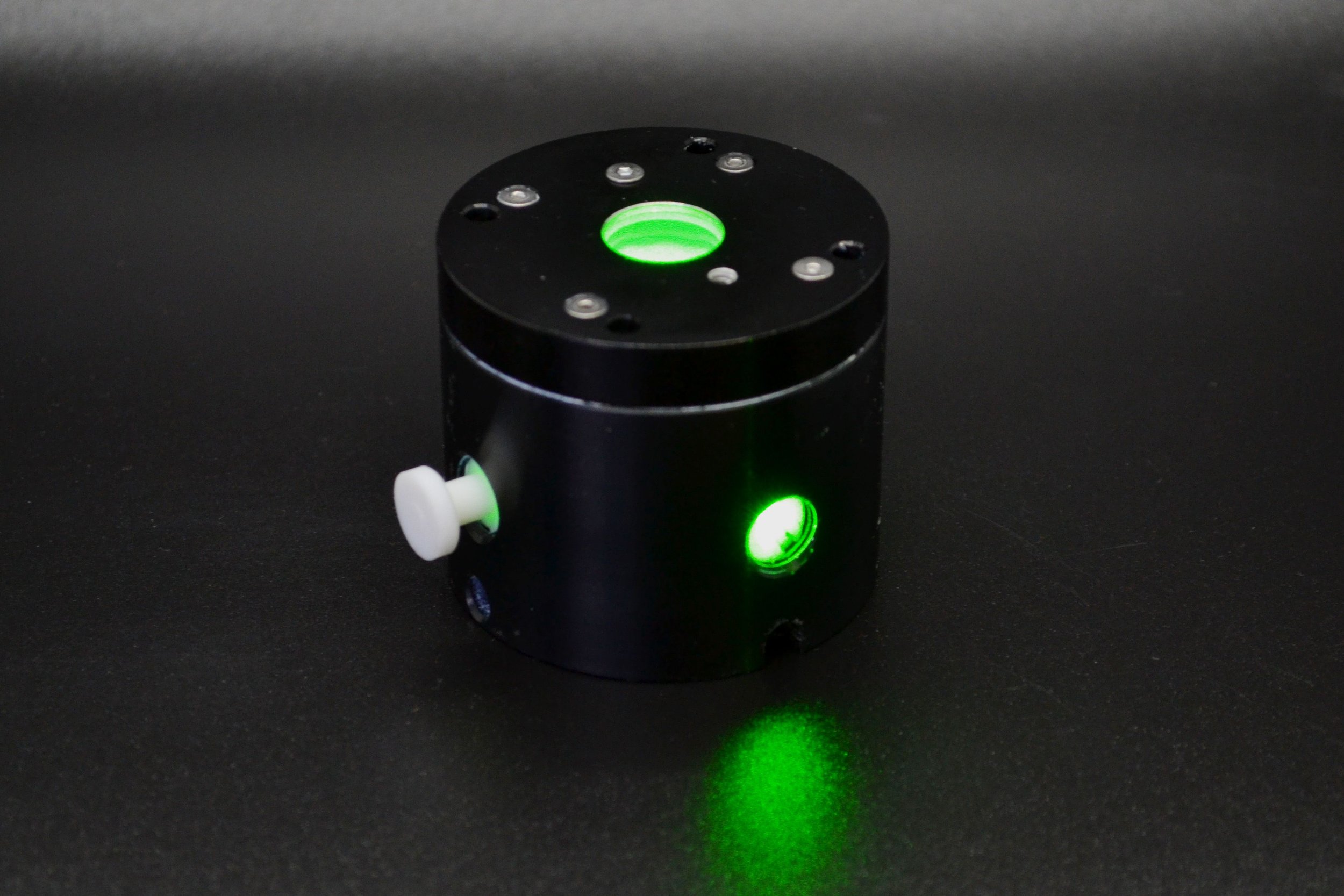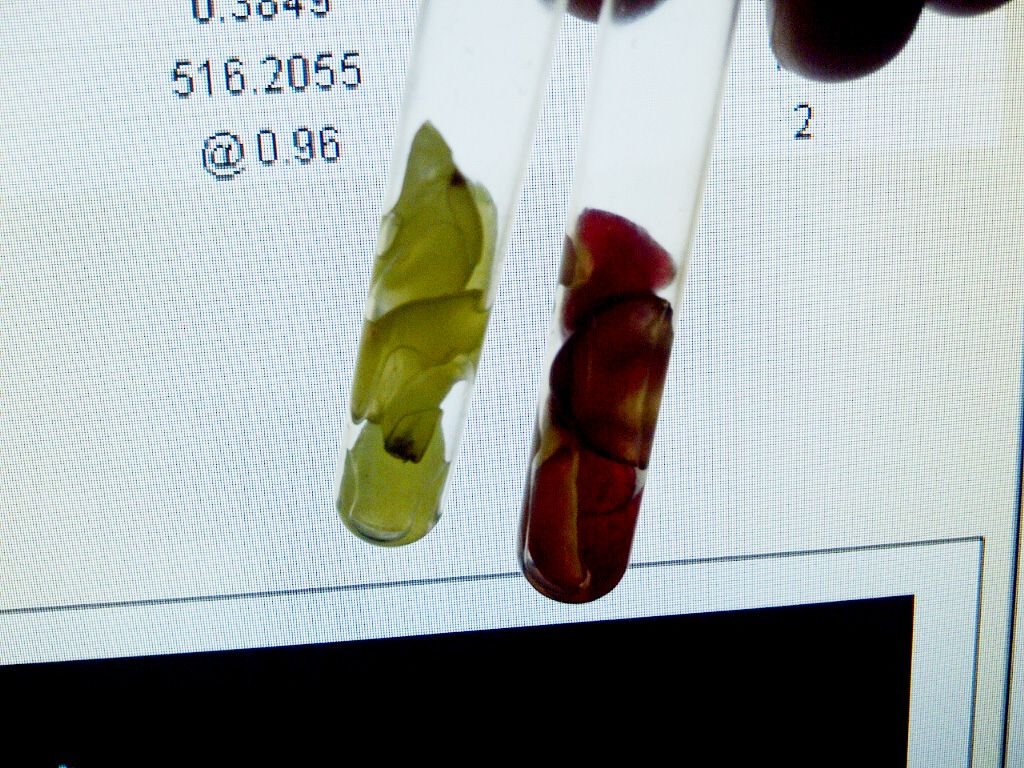Core to a “CLARiTY” spectrometer is the DSPC
–DeSa Suspension Presentation Chamber –
which houses the Integrating Cavity* of an appropriate shape & volume
An integrating cavity can be thought of as a filled integrating sphere, but with considerable advantages. We are not doing diffuse reflectance measurements, but pathlength correct absorbance.
It was the 1950s when group of oceanographers gave this idea a try. Their goal was to achieve a very long pathlength and thus very high sensitivity. In their paper was the line: ‘Scatter by small particulates doesn’t seem to matter.’ In 2008, Dr. Richard DeSa read this comment and recognized that their integrating cavity design – useful to them for sensitivity enhancement – could be the long-sought solution to studying light scattering particles.
It is well known that spectrophotometers using cuvettes work well by sending a focused beam of light through a clear sample to the detector. In truth, then, cuvette spectrophotometers are useful only with samples devoid of any natural or other non-clear environment, which are within a narrow absorbance range. The cost to use these spectrophotometers, therefore, is all the time, talent, consumables, and money it takes to strip away everything which is not clear from a given sample.
Compare this with the immediacy and ease of using a spectrophotometer with the integrating cavity sample holder.
Success with all light absorbing samples, no matter the level of clarity or turbidity.
Involvement of 100% of the sample within the integrating cavity.
Success across a 20,000 fold dynamic range, from 0.001 AU/cm to 100 AU/ cm is available using the appropriate volume integrating cavity.
Dynamic range
The volume of the integrating cavity in the DSPC establishes the dynamic range of a given CLARiTY.
The standard choice is for the most dilute suspensions (0.001-3 AU/cm); this is the round bottom flask 8 mL model.
2 mL test tube. Absorbances 0.1 to 2 Abs/cm
Five volume flow-through cells are currently offered for flow-through of high absorbing samples, nominally 5-100 absorbance units/ centimeter.
The raw answer returned by a CLARiTY is un-pathlength corrected. Pathlength correct answers require that the volume of the sample match the volume expected by the conversion algorithm, which is only difficult only when working with solids or intentionally using different volumes for your own reasons.
Quantum Northwest produces the Peltier DSPCs for Olis instruments. http://youtu.be/nqeUM4dfm9M
This photo shows the "gas of photons" within the DSPC.
Various OLIS DSPC designs
Grapes in test tubes. Yes, this works! It really works!
DSPCs can be easily removed and replaced, expanding the application of a given instrument.
An integrating cavity filled with sample is shown
OLIS DSPC quartz globe next to cuvette
The DSPC shown beside an integrating cavity.
A 1 cm² cuvette next to the 8 mL integrating cavity.
Two DSPCs on their side, showing different diameter integrating cavities.
* Read more about the benefits of Integrating Cavities over cuvettes here.
Applied Optics, 1992: “… an integrating cavity is completely filled with an absorbing sample, which generally will be considered to be an aqueous suspension or solution. Because the diffuse reflecting cavity walls have high reflectivity, the effective absorption length in the sample is many times the diameter of the integrating cavity…this integrating cavity concept is especially sensitive to small absorptions.”
Another way to think of an integrating cavity is as a bright white room without windows, just two small doors. All of the measurement light, which enters through one door, and all of what would be scattered light, stays within this room, bouncing off the reflective walls, until it escapes through the second door to the detector.







